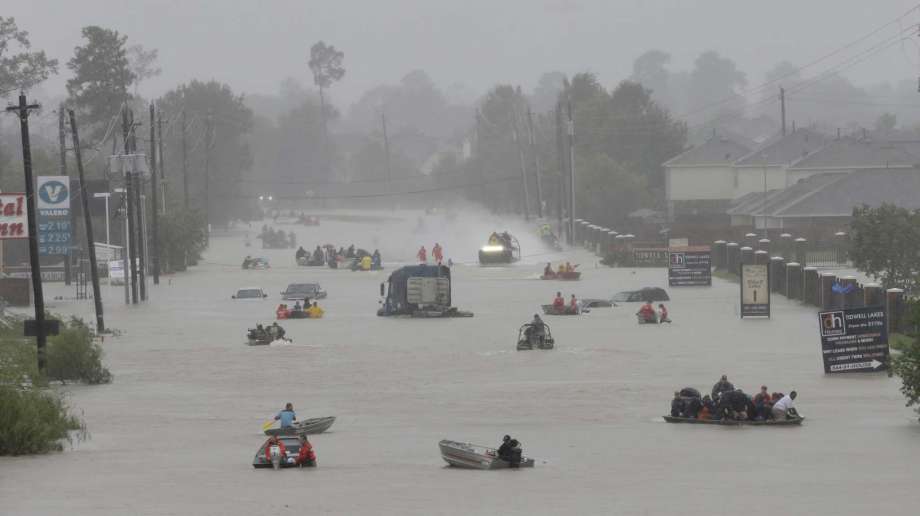A Nightmare Named Harvey
At 10 pm on Friday August 25th, a Category 4 Hurricane with maximum sustained winds of 130 miles per hour slammed into the Corpus Christi area on its way to Houston. Stalling between Rockport and Galveston, Hurricane Harvey continued to pick up moisture from the Gulf dumping an initial 40” of rain at a rate of 5 to 7 inches per hour on the region. The storm moved off shore then returned vacillating between Hurricane and Tropical Storm status. Moving northeast at a sluggish rate of around 3 miles per hour, Harvey continues to dump massive amounts of rain between Texas and Louisiana. Levies are overflowing and much of Houston’s Transportation infrastructure is at this point inoperative.
Trucks are submerged under the deluge of water
Thousands of roads in the Houston area are closed as levies and rivers overflow their banks. Interstate 45 between Galveston and Houston and up through its northern suburbs has major closures. The same is true for I-10, I-69 and US 59 in the same area. Houston’s Transtar Traffic Map shows access to Barbours Cut Boulevard via SR-146 and 225 have sustained high water virtually sealing off the Morgan Point Ocean Terminal. Trucks remain stranded on highways flooded up to the roof of their cabs, and one regional forwarder indicated it could be 7 to 10 days before the water recedes. Thankfully major highways between Houston and San Antonio are open and Interstate 35 is clear all the way to Laredo.

Photo: Melissa Phillip, Houston Chronicle / © 2017

© Copyright 1999–2024 American Journal of Transportation. All Rights Reserved

